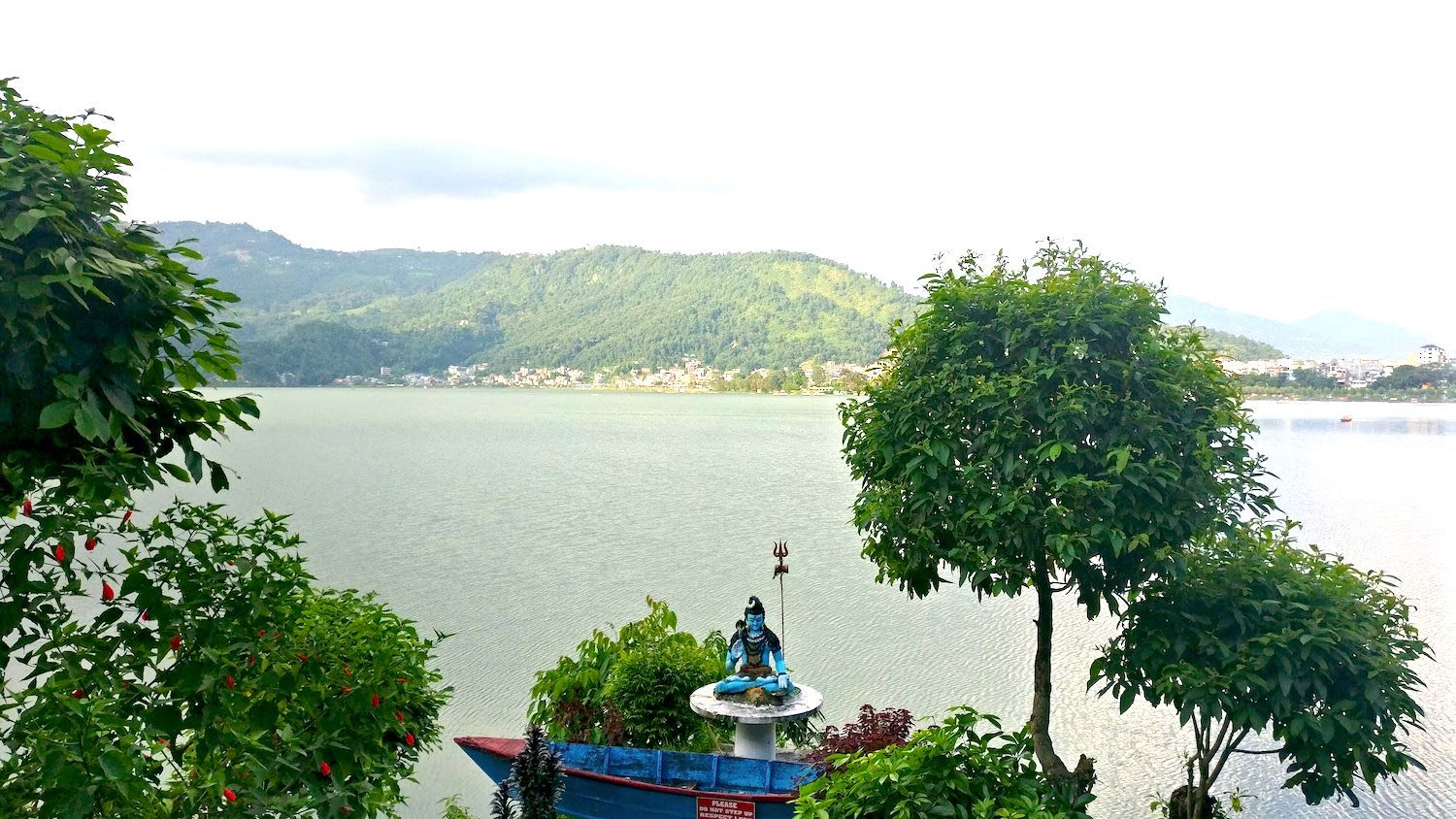Pokhara, in itself, is a fascinating place, and thus, pinpointing places that are worthy of visiting is an arduous task for any adventure enthusiast. The beauty and the calm surrounding of this valley are guaranteed to sweep you off of your feet. With a huge tourist-attracting potential and several other reasons, the city takes its place as the second most important city in Nepal. It certainly takes the first place when it comes to tourism and related business though. The most appealing thing about this city for tourists is the rich culture, diversity, and natural gift. Pokhara is also known as the city that lies under the shadow of Himalayas. Since it is a valley, you will find a Mountain Range on any side you turn.
As such, Pokhara has been maintaining its stature as a major place for national and international tourism. You can find visitors from different countries, ethnic backgrounds, and age groups. Sure, the geographical expansion is small compared to other venues like London, Paris, or any other major destinations. But, the place can hold its roots with the religious sites, the green hills, lakes, and splendid mountain ranges. All of us have different reasons for visiting different tourist destinations. Some like to challenge their physical capabilities by going head to head with the sturdy geographical ups and downs while some are just after mind refreshing and relaxation. For this, Pokhara suggests mountain climbing, biking, trekking, and other options. Some travelers are here to experience a different kind of life among strangers. We can easily spot such individuals who need a book, a camera, and a longboat sailing time in the tranquility of a lake. Lucky for them, Pokhara has these options too. Sort of like a mixture of best experiences, one should always add a few day's trips in Pokhara if they have plans on visiting Nepal. It will certainly be worth the time and money.
To make your adventure worthwhile and easy, we have a list of places you should visit instead of random searching. Take your time and enjoy all of these locations on the basis of your time schedule and economy plans.
1. Old Pokhara
Before we explore the places of Pokhara and understand its current beauty, why not take some time to roll back and start-up from the beginning. What I mean is, there is a separate destination for history lovers. Pokhara has developed over time with tourism. The place has its originality no doubt, but years and years of tourism have started leaving western prints on the place. If you like to experience the origins of Pokhara and the civilization, head towards the northern side of the city. Along the way, you will come across Mahendra Bridge which kind of connects the two shades of the same city. I would highly recommend exploring this part of the valley on foot as it gives more meaning to the origin exploration.
Away from all the traffic, horns, busy roads, and restaurants, the Mahendra Bridge will lead you to a Nepal Telecom building. Don't worry; the locals will guide you to this location if you ask them. From that point, head northwest along the roads of Tersapati. On this path, you will find several shops that trade religious merchandise. You can stop and take a look or even buy these things but, always mind your bargaining skills in Nepal. This simple habit will save you a ton of money in different circumstances. As you gradually proceed towards your destination, you will come across an intersection with the place Nala Mukh. Just stop there for a moment and observe the traditional houses which have been standing for decades. The houses belong to the people of Newari culture and are built according to historic architectural patterns. Almost all of them have wooden windows carved with several detailing and walls made of decorative brickworks.
From there, you will be able to spot the Bhairab Community or Bhairab Tole after a small walk to the northern side of the cultural houses. It will be a short time before you arrive at Bhimshen Temple which has cultural importance and weightage of almost 200 years. The shrine is dedicated to a Newar community God, who is believed to overlook the spheres of trade and commerce. There is another surprise element on the temple, which is the erotic carvings. Embarrassing it is, but those are the basics of human reproduction cycle. Around the temple, you will find several shops that sell ceramics and baskets.
Soak up the amusement and refreshing part of the culture and head towards the north for more adventure. I know, the "keep going north" is getting repetitive but, what can I do? Anyways just 200 meters to the intended direction will get you to a small hill. Take your time and hike the hill and you will find an ancient temple on the top called the Bindya Basini temple. The reason I called it ancient is that the establishment was founded in the 17th century. The temple is the resting place of Hindu Goddess Durga or the brutal incarnation of Goddess Parvati. You will most likely find people worshipping a special stone called "Saligram".
2. Phewa Lake
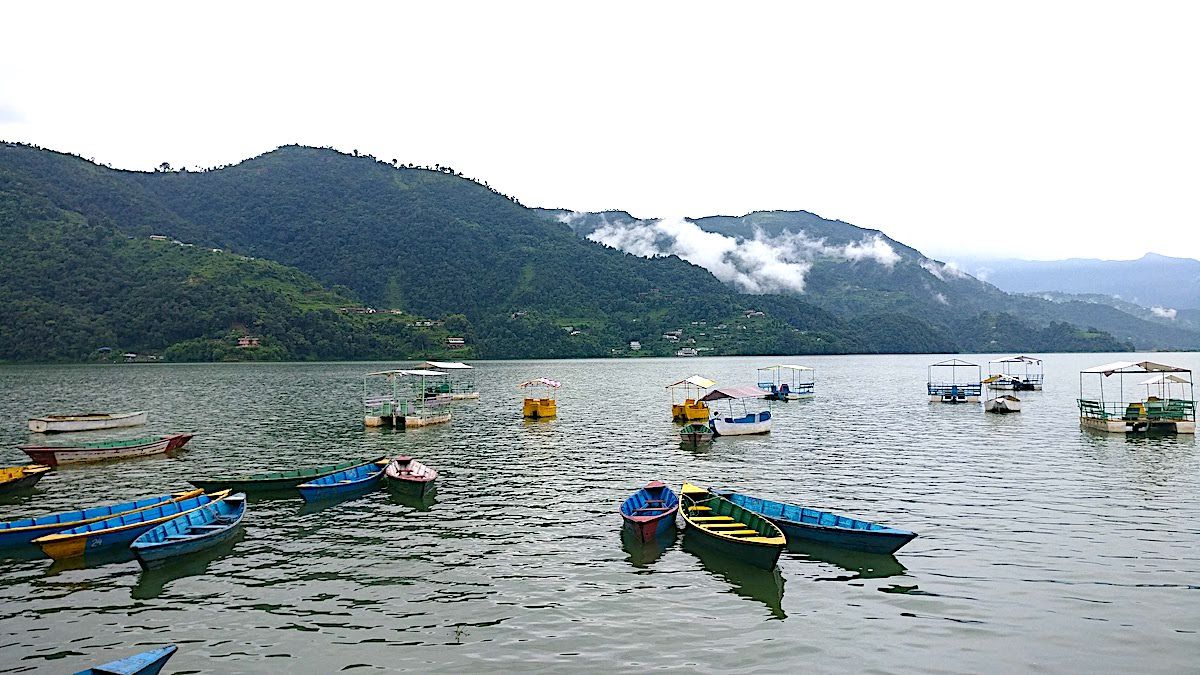
If the tourism compass hits the geographical map of Pokhara, the focal point will undoubtedly fall on the Phewa Lake or the Phewa Tal. This place is so famous that some people start their whole Pokhara journey from the chilly experiences of Phewa. Sure, the crowds are always there to disturb your tranquility but, this is what makes the lake more beautiful in its own way. An interesting fact about the lake is that it has a natural roofing system. Yes, the lake has a shadow of the Himalayas shining on the surface which includes Machhapuchhre Mountain range. Along with this, the green forest on the other side and the colorful boats roaming here and there will make your whole day delightful.
You will have crystal clear water below, a blue sky as you look up, and fresh air that fills your lungs as you take a long happy breath. I mean, what else does one need to blend with the miracles of nature? If you see the lake, you will immediately turn your head to an island located in between the lake with lots of people. That is the Vishnu temple and is popular among the visitors with religious intentions. The island lies at a 5 km stretch from the lake periphery and gets a lot of devotees on Saturdays. Phewa Lake is truly beautiful on a clear morning when the mountain image gets reflected on the water. You can enjoy a long and relaxing boat trip around the lake. If you like to stop at the temple in the middle, you can simply ask your paddler or you can just take a round around the island. Boating is highly recommended for any tourist and a major source of income for the Pokhara tourism scene. The market area around the lake is known as lakeside and is very lively during the evenings. You can enjoy the market and the local foods after a good and satisfying trip around the lake.
3. Devi's Falls
Another destination that relies on the majestic beauty of water is Devi's Falls. The name is a spin-off of David Falls due to a horrible accident that happened several years ago. It is believed that a Swiss tourist got caught in the sinkhole with his girlfriend and lost their lives. After that, the place got popularly known as David's Falls. The initial name is, of course, the name of the tourist but, the second word signifies a waterfall, not an act of falling because that would make this a horror spots. Well joking aside, the original name of the place is Patale Chhango and translates to underground falls in English. This waterfall has some unusual characteristics that attract a lot of tourists every year. It comes as one of the most visited destinations along with the Phewa Lake. This is the place where a stream called Pardi Khola disappears after flowing downwards the stones. The description might not convince you but, there is a reason this place receives thousands of visitors every day. Just visit the falls once on your Pokhara package and you will get the idea behind its popularity.
Here, you will find several people enjoying the continuous flowing of water. This place also provides a good opportunity to put your photography skills to the test. In the monsoon season, the water flow is so intense that the sound will almost deafen the surrounding noises. The water splashes act like miniature prisms and reflect small rainbows from the droplets. If you can capture these beautiful scenes then congratulations, you have a good sense of photography.
4. International Mountain Museum
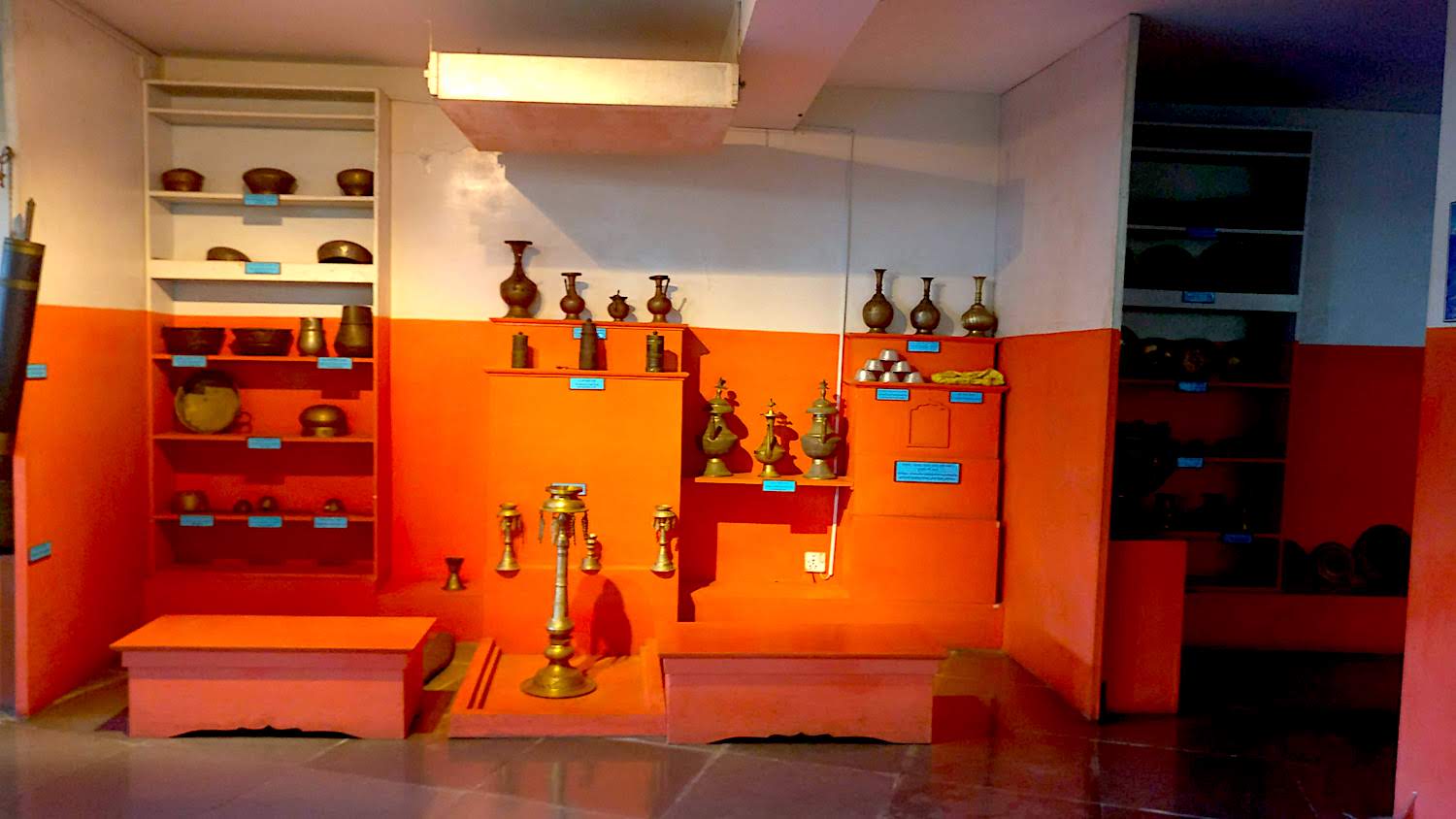
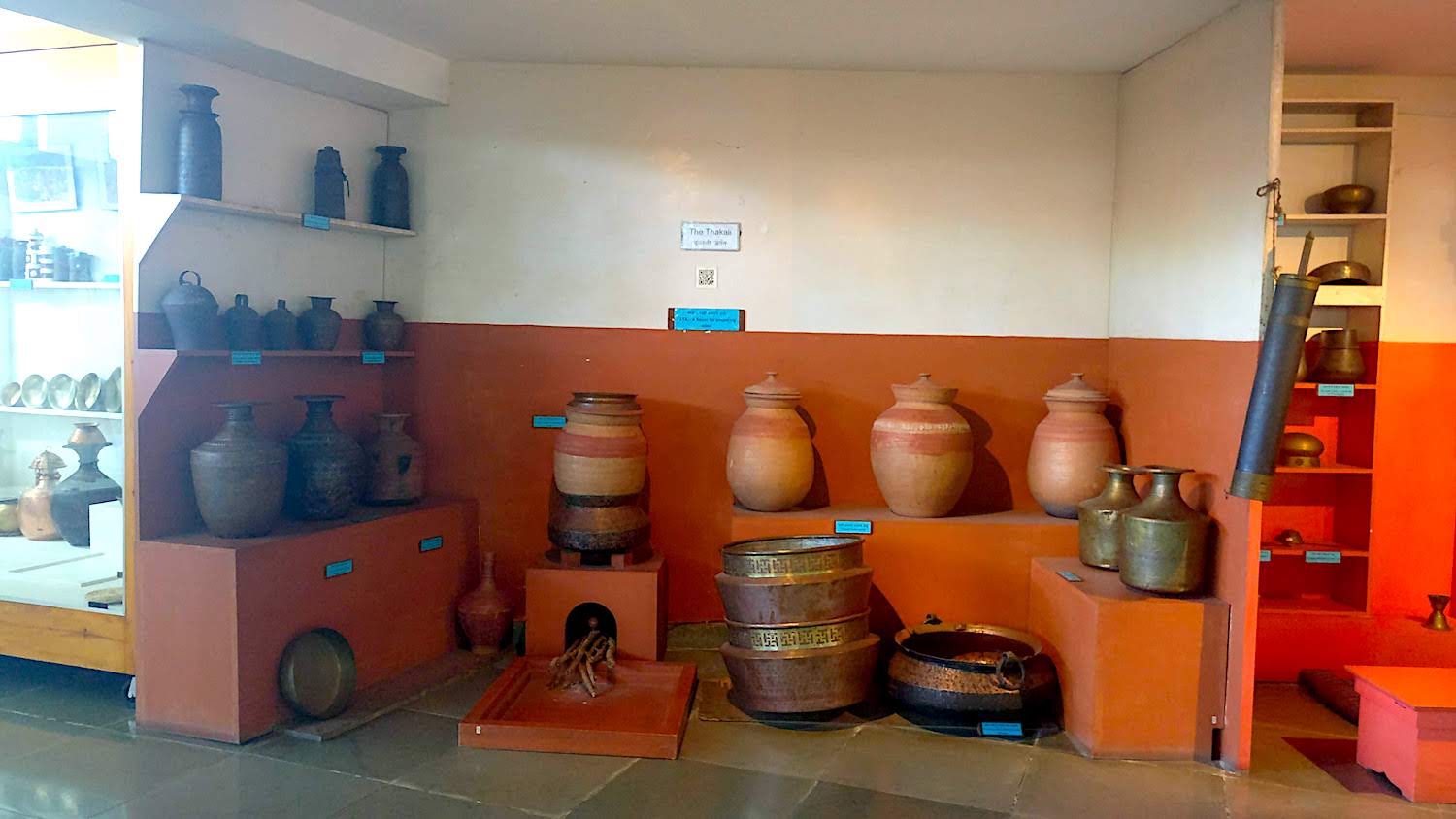
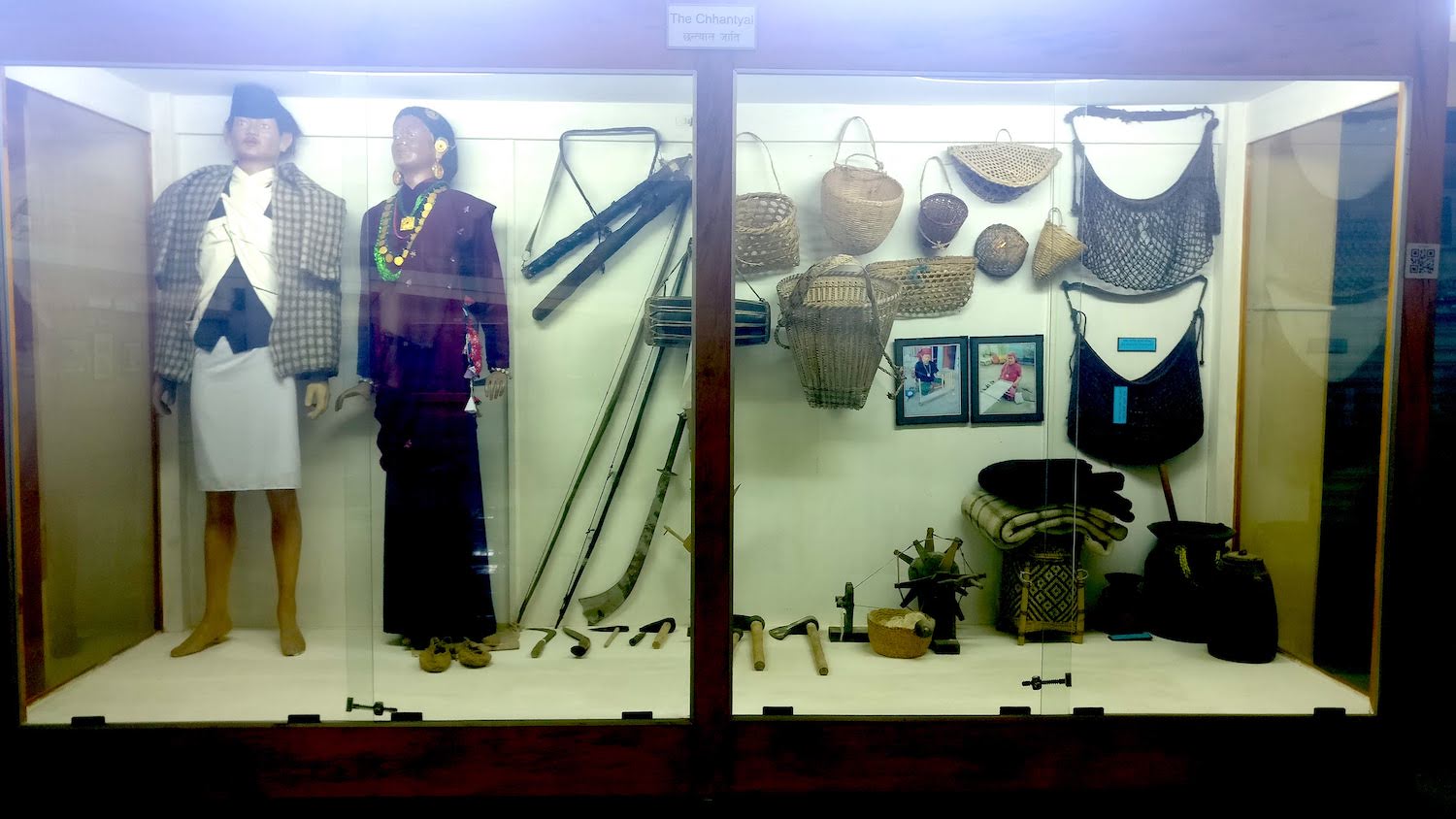
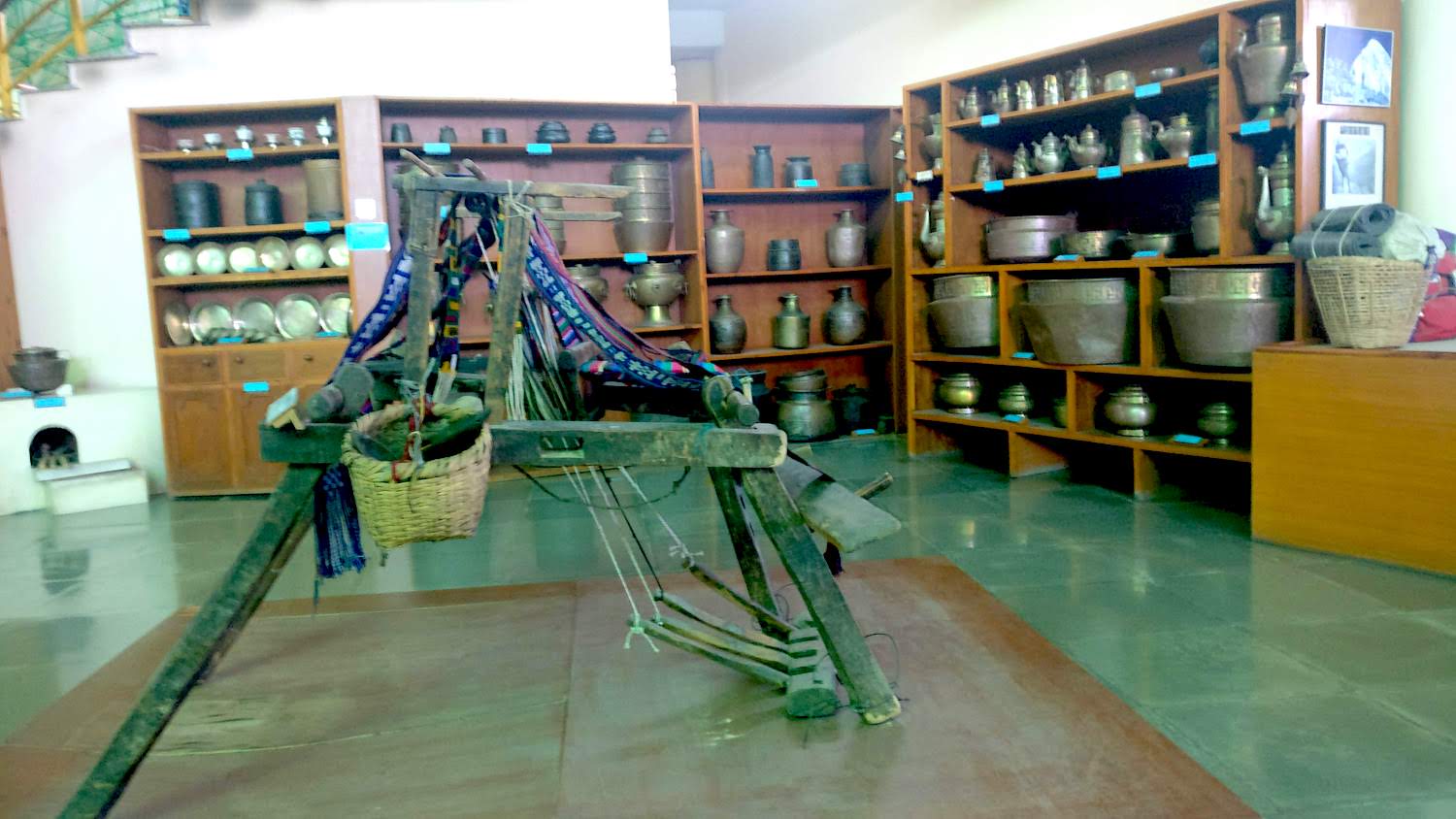
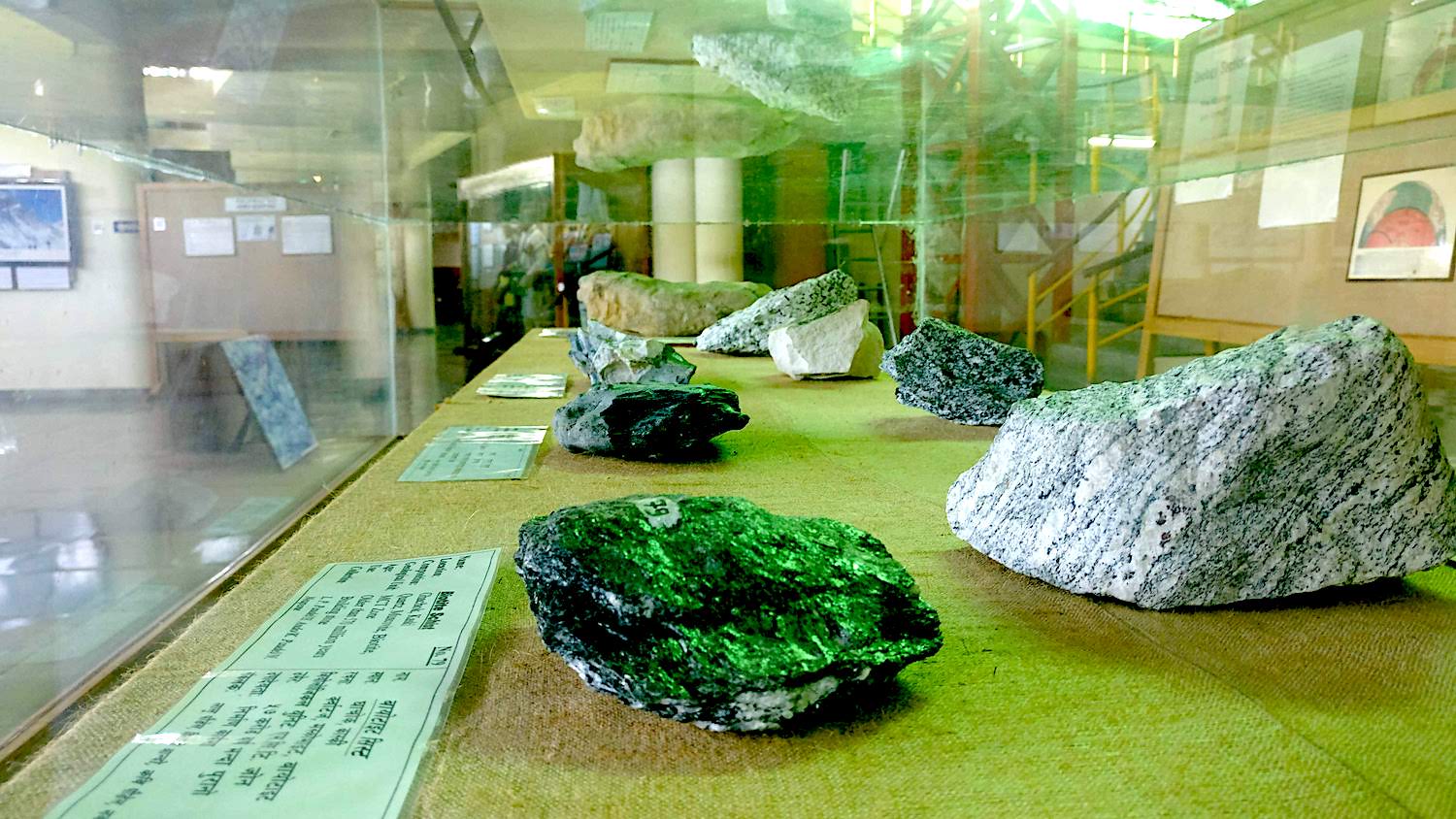
So, what if you don't have the time or skills to actually climb a mountain? This museum will surely quench your curiosity thirst. A beautiful destination for all the mountain lovers, the international mountain museum is a major tourist magnet. When people mention Pokhara, their minds immediately go towards the natural beauty and the adventures related to such blessings. But, Pokhara has its own man-made charms too. The museum is a dedication to all the Himalayan expeditions and the necessity to record or preserve the historic moments. The initiation dates back to 1995 under the affliction of the Nepal Mountaineering Association or NMA. The members of the association had the vision to preserve the historic moments and other neglected details on the mountaineering history. The building that started with a mere idea waited nine years to officially start their business. They collected the important data and rare items to add to the museum and made it something that mountain enthusiasts could not resist. The place is sort of like a library for mountain lovers who have a chance to know the history and greatest moments via visualization.
5. World Peace Pagoda
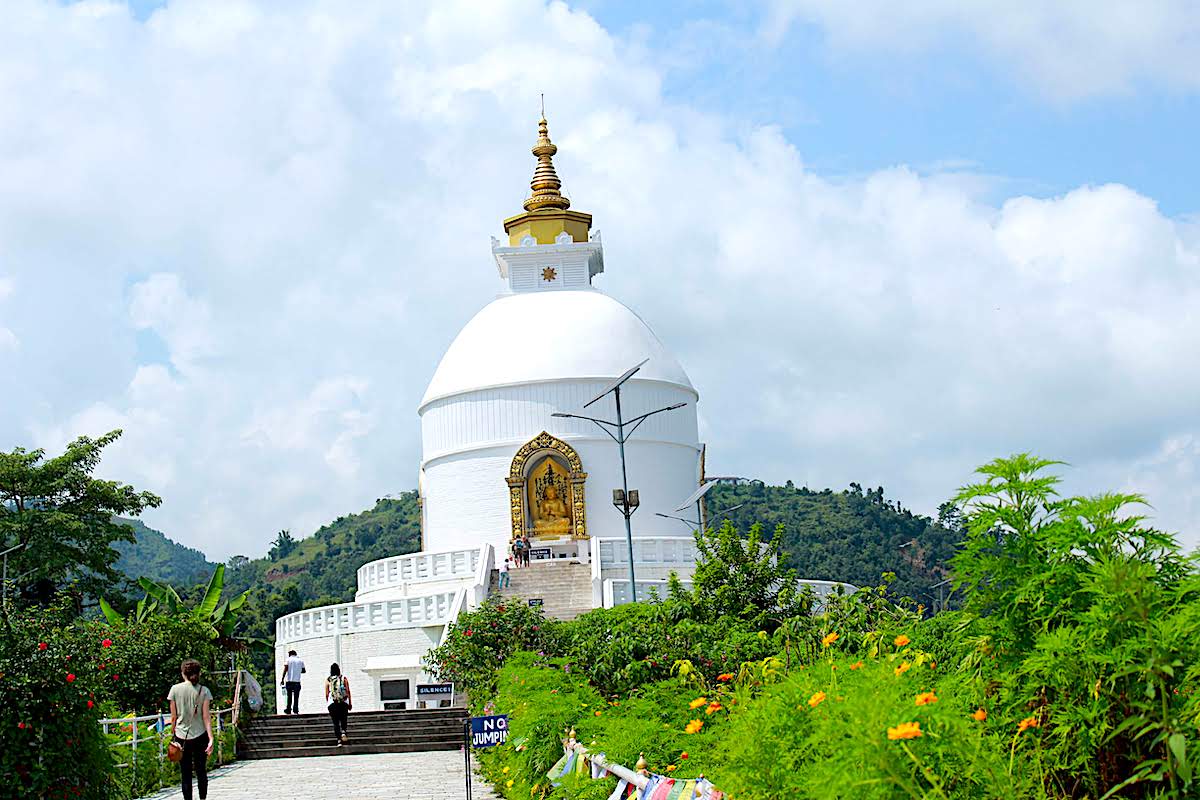
The World Peace Pagoda is another spot in Pokhara that you might not want to miss. The structure is also called Shanti Stupa where Shanti means Peace. You can find this giant Buddhist-style monument on top of a hill. The hilltop view is also amazing after you have visited the place. You can literally look down on the Phewa Lake and observe other parts of Pokhara from a completely different angle. Let's be honest, everyone likes drone shots and if we are the ones taking the shot with our eyes, the fun get magnified several times. Anyways, the name Shanti Stupa comes from the meaning that this place carries world peace on its shoulders. The structure is wholly dedicated to world peace and the ultimate pleasure we should all be longing as sentient beings on the Earth.
For those of you already familiar with the place called Lumbini, there is another Peace stupa there. A peace stupa on the land where Buddha was born makes more sense but, Pokhara has gracefully continued the tradition with a second one. It is kind of an irony that the place meant to signify peace has a lot of crowd from tourism. Well, the people are well aware of this fact and therefore refrain other people from making any kind of unnecessary noise on the premises. With the passage of time, the stupa has changed quite a bit from its initial opening in 1947. Somewhere in between, the whole place had to shut down for renovation and re-opened its gates to the public after seven whole years. It was in 1999 that the peace garden opened its arms for all the visitors once again. The place is a quiet and relaxing tourist venue that lies on the southeastern shore of the famous Phewa Lake. This spot is also famous as a good sighting point for majestic sunrises and sunsets. This means one can enjoy the natural beauty as well as the man-made environment at the same time.
6. Seti River Gorge
The Seti River holds a special place on the hearts of Hindu believers. The river is associated as an incarnation of Lord Vishnu, one of the three main gods of the Hindu religion. The first scaling of the river goes back to 1971 when two foreigners C. Taylor and Jennifer Ide initiated the process. After that, the tourism industry slowly nurtured along the banks and has reached greater heights as time went on. Seti River is surely a blessing from the gods but, there are times when nature tests its consumers. In 2012, a serious flood hit the river waters and took the lives of sixty people residing in the northern areas of Pokhara. The flood was so powerful that the river was compelled to change its course.
Everything aside, the place still holds accountable for thousands of tourists in the Pokhara tourism scene. Getting there is not that hard as adventurers either travel via private vehicles or by bicycles. For paddlers, you start at the Mahendra Bridge and make your way through the old Pokhara residential areas to reach the river. If you are uncomfortable with both the options, try using local bus services starting from Prithvi Chowk. The fare is cheap but, you might have to face some crowds. While you are at it, take some time to visit the Prithvi Narayan Campus. It lies just 10 minutes away from the river bridge and you will get a chance to view the river from a height. Keep your eyes open as you will likely come across a ridge that will give you the view of Kahun Danda. Just opposite of this ridge is the Manipal Hospital.
After you have visited everyplace, make you way back to the Mahendra Bridge and head towards Ramghat. "Ghat" means a cemetery site in Nepal. You will have the river scene again in front of your eyes at this place. With all sorts of experiences, the Seti River tourism package can really refresh your body and mind.
7. Gupteshor Mahadev Cave
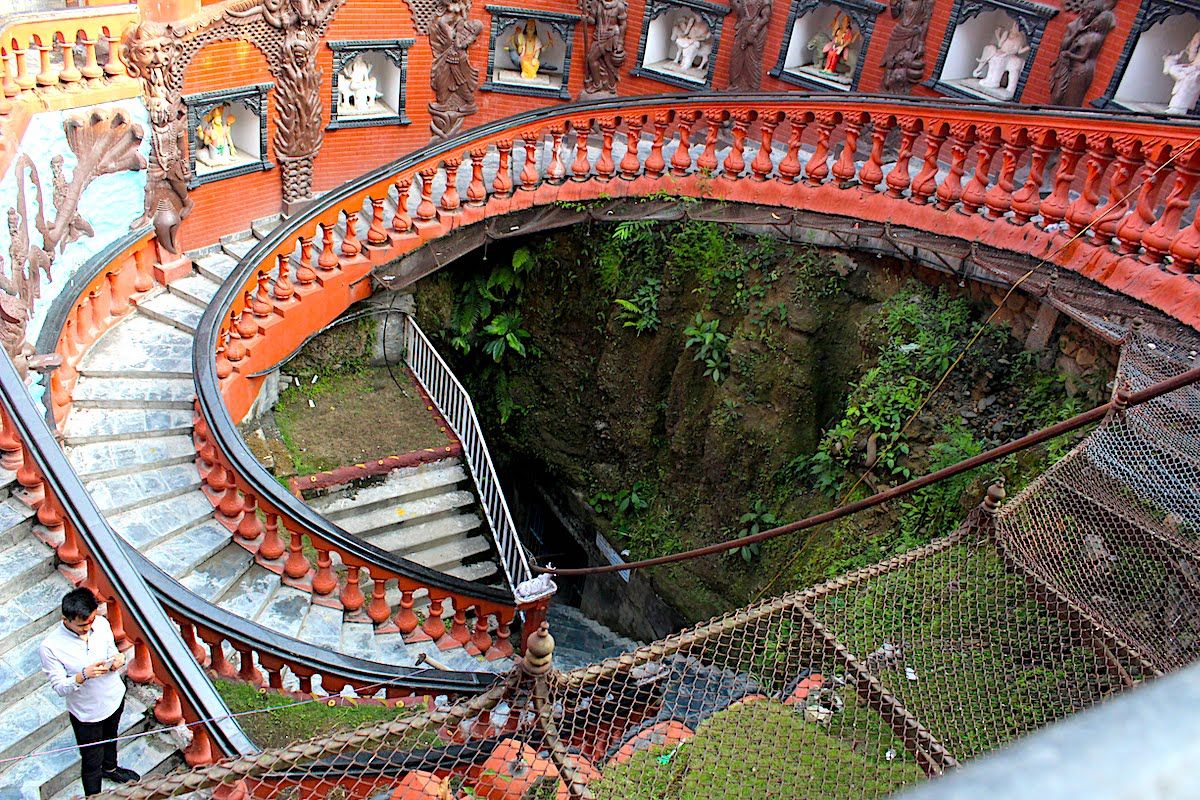
Another interesting spot that maintains its position among the fascinating places to visit in Pokhara is the Gupteshwor Mahadev Cave. The place is also locally recognized with an alternative moniker called "Bhalu Dulo". With a total length that exceeds 2000 meters, the cave is recognized as one of the longest caves in Nepal. We have already discussed the amazing features of David Falls and as it happens, this cave lies across the waterfall. As you step inside, you can hear the sound of water moving in and out of the caves with a thundering effect from the unique structure. As far as history goes, there are several stories related to the existence of the cave. The place got discovered in the 16th century and had no tourism facilities like modern-day arrangements. It was only in 1991 A.D that the entrance of the cave got properly constructed.
The outside part of the cave has a huge brown arch furnished and you will see this as soon as you enter its premises. There are several souvenir shops in case you like to take away something for your loved ones. You can also see a statue of Lord Vishnu in a sleeping position near the ticket counter which is just in front of a spiral staircase ad concrete balcony. The whole cave has two major divisions of which, the second one remains closed during the monsoon season for security issues. As you move further inside the cave, you will come across small shrines that are all dedicated to Lord Shiva. The cave is dark and narrow so, I would recommend carrying a torch with you for better visuals. Of course, the facility has lights, but it still gets a little dark for proper sightings. As you move forwards, you will ascend through some stairs and get to a place with a cow painting that is standing over a Shiva Linga. This painting has religious values and makes sense if you look at it that way. A little further ahead is the Shiva temple which leads to the second part of the cave. The second portion is 140 meters in length and has a narrow and slippery path to the outside.
8. Sarangkot Viewpoint

Sunrise and sunsets are truly wonderful if you have the right kind of attitude towards it. Of course, they are a part of natural phenomena and will occur even if we do not pay any attention. But there are some natural spots in Pokhara where you will realize that merely waking up early and feeling the early rays of a sunrise can have a great impact on your entire day. Sarangkot definitely takes its place on such a list. This amazing hill station is just 5 kilometers away from the Lakeside region. So, if someone enjoys a day full of lakeside entertainment then he or she will definitely crave a refreshing morning. The main attraction of this viewpoint is the surreal view but, not just any view, a view of luscious mountain ranges. You can literally see mountain ranges like Annapurna massif, Dhaulagiri, and the Machapuchhre.
For tourists who have explored other destinations in Nepal, the Sarangkot resembles the Poon Hill trekking destination. The experience is kind of the same but, on a smaller scale. Sarangkot hill spot is a natural spot for sightseeing and has no man-made attribute attached to it. The place was always there and gradually spiked the interests of visitors until it fully flourished as a major tourist attraction. What more, there is a temple on the top of the hill which is solely dedicated to Lord Shiva. The hill spot is not only for visitors but, also provides a relaxation spot for anyone who likes to rest their tired body and soul. For tourists, there are a lot of things to do in this place. Besides the traditional mountain viewing, one can explore the adventures of paragliding. Paragliding is an extreme sport where you sustain yourself in the air for more than 30 minutes with the help of a glider and a professional. While you are freely surfing the air, you can see an aerial view of the majestic Phewa Lake and the civilization below. For interested ones, I would suggest taking the challenge in between the months of October and April for maximum pleasure.
9. Gurkha Memorial Museum
You might have come across the name of Gurkhas in several places or occasions. Gurkhas generally refer to the soldiers from Nepal or a place in Nepal called Gorkha. The name itself signifies bravery and ferocious willpower. To this day, the British troops include Gurkhali soldiers as a part of their national security system. As such, the Gurkha Memorial Museum is kind of an honor to all the contributions of Gurkhali soldiers around the globe. The museum started its original journey from 1994 A.D and gradually grew up with support and love. The main establishment was in Kathmandu, Lainchaur, and had a few items on display at first. As time went on, the place started getting several grants and donations which helped them broaden their area. The news quickly made its way to the British Government and the museum received a great deal of help. This helped the committee expand its facilities to an additional three rooms between 1998 and in 2000. During this time, the UK Government helped the museum with several military items of the Gurkhas from their countless battles.
The museum finally reached its greatest heights in 2004 when a former army member Commander Colonel Peter provided the management a leased land which is slightly outside of Pokhara valley. This is the place where the current establishment is located and runs its business. Just a year later in 2005, the first floor was completed and the story started welcoming visitors. Fast forward to three years later and more floors were added to the museum. There are a lot of display items and several facilities for tourists now. In 2015, a parking spot was built for the museum and with this, the overall construction project of the beautiful museum came to an end.
Generally, people visit this place after they have visited all the other important places in Pokhara. I do not mean this place lacks importance but, it is generally for those people who have an interest in history and culture. While the other destinations are about relaxation and interaction with nature, the museum displays the hardships and glory of the Gurkhas and their contribution to the making of modern Nepal. To dissect the whole place, I would have to say that the ground floor concentrates on the background details of Gurkhas. This includes information on their habitat and general lifestyle. The details clearly show the harsh times the Gurkhas faced which forged them into a human weapon afterward. With several portraits and paintings on the way, the other floors display the customs, traditions, and the specialist that worked on transport and engineering departments.
10. Jangchub Choeling Monastery
Welcome to one of the most important and oldest monasteries of Nepal. The establishment of this holy places dates back to 1967 when Lama Dupsing Rinpoche by HH the 14th Dalai Lama supervised the construction under his guidance. With the passage of time, the monastery developed as a tourist attraction place and expanded its physical monstrosity. The place which started with being a home to mere 35 monks now has hundreds of monks under its wingspan. The monastery is also growing on its cultural side and has collected several volumes of Tengyur and Kagyu text over the years.
There are several things to observe in the place which makes it very pleasing for the tourists. Inside the monastery, you will find a shrine hall which resembles the architecture of a traditional Tibetan place. The hall has a 7-foot tall Buddha statue which is plated with copper and gold. Just on the back of this huge statue are thousand small sized Buddha figures which represent the thousand Buddhas that existed in the fortunate era. The walls are filled with beautiful paintings which signify the life journey of Buddha from birth to Nirvana state. The credit of all these paintings goes to a Tibetan artist named Mr. Dhawa. On the left and right side of the entrance you will see some paintings of the two supreme ones and the six ornaments which elevate the beauty of Buddha's instructions. Also, on the walls opposite to the Buddha figures, there are portraits of sixteen Arhats who carried on the teachings of Buddha after he ascended heaven.
As you explore more floors, you will find other interesting things to keep you excited. The second floor is the place in the monastery separated for residence purposes and also acts as the meeting place for the Chief Abbot Shangpa Rinpoche. The third floor is the home for the chapel of the Lineage Masters. Here, you will find clay figures and also images of the Lineage Masters according to the Kagyudpa traditions inside the chapel. So what do the chapels hold? Well, it is kind of like a treasure box for Buddhist followers as they have 102 volumes of the Buddha's words and Tengyur which is the commentary by Indian Buddhist Masters.
So, this marks the end of the list for the fascinating places to visit in Pokhara. I would have loved to include other recommendations but, it would have made the whole article rather lengthy. I have trimmed down the secondary options and listed the basic and most-loved places according to tourists. I hope this list will come in handy if you have no intention of hiring a guide and want to explore the places by yourself. Pokhara is truly a beautiful place and making a list of good places is really tough. For starters, these places can satisfy you with its beauty and challenges. After you have completed visiting these places, read some more and explore other areas of the amazing Pokhara valley.

